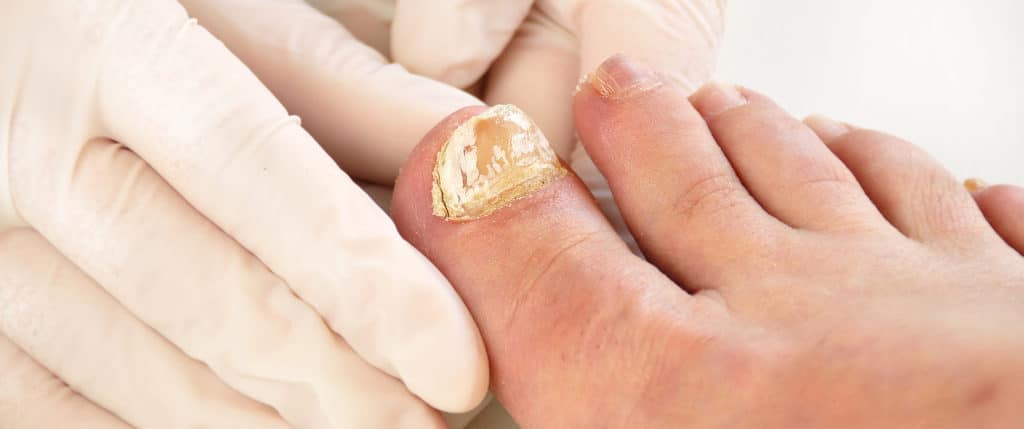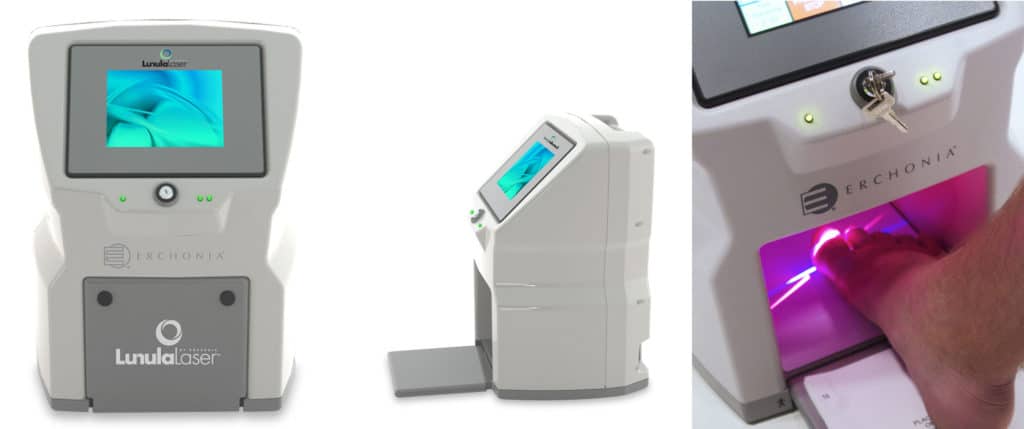Laser treatment is a popular and effective way to resolve fungal nail infections. In this blog post, we will discuss how laser treatment works to eliminate fungus from the nails and restore them to good health.
Fungal nails are common
Fungal nail infections are more common than people think. It is estimated that 1 in 4 people have some form of fungal infection on their nails. This is because the fungus that causes these infections thrives in damp and warm environments, which is why they are often seen in people who swim or exercise regularly.
Many people don’t realise they have a fungal infection because the symptoms can be mistaken for other conditions. For example, athlete’s foot may cause itchy, flaky skin on the feet, but it can also spread to the toes and groin.
Candida is the most common fungal infection affecting the human body, and it is usually found in the gut, bladder, urethra, nails, and skin. This infection can cause a variety of symptoms, such as diarrhea, constipation, abdominal pain, bloating, nausea, vomiting, urinary frequency and urgency, vaginal discharge and itching, and nail fungus. Candida overgrowth can also lead to an increase in toxins in the body and a decrease in the body’s ability to fight infection.
Athlete’s foot and toenail fungus are often related
Athlete’s foot is a common fungal skin infection that affects the feet. It is caused by a fungus that thrives in warm, moist environments. Symptoms of athlete’s foot include itching, burning, and stinging between the toes. The fungus can also cause scaling and cracking of the skin on the feet. Toenail fungus is a common complication of athlete’s foot. The fungus can infect the toenails and cause them to become thick and discolored.
How fungus can spread
Fungus spreads by releasing seeds called spores into the air, leading to an atmosphere full of spores. They can settle on the human body and when the conditions are right, they can start to grow. The spores prefer damp, dark, and warm environments to develop which is easily found inside footwear.
Spores that settle on the human body can cause other skin problems such as athletes foot infection and ringworm. If a person has a weakened immune system, they may be more susceptible to fungal infection.
Inside the shoes
The fungus thrives in warm, moist, and dark environments conditions that are often met inside shoes. Human feet can produce half a litre of perspiration each day and eight hours spent standing or walking around in shoes will give any kind of microscopic life ample food supply!
If you play a lot of sports or go to the gym often, or simply wear the same shoes every day, this also produces a humid and hot environment, you are giving the fungus the perfect opportunity to grow and spread.
The signs of fungal nail infection
Now that the process has started on the nails, the nail becomes discoloured, yellow thickened, and emits an unpleasant smell.
Preventing fungal nail infections
The best way to prevent fungal nail infections is to keep your feet clean and dry. This means washing them daily with soap and water, and drying them thoroughly afterward. You should also wear shoes that are made of breathable materials, such as leather or canvas, to allow your feet to air out.
To prevent fungal nail infections:
- Keep your feet dry and clean to prevent any problems.
- If you have athlete’s foot, don’t wait! It can spread easily to your nails and make them infected too. Get treatment right away so this doesn’t happen.
- Wearing clean socks every day is one of the most important things you can do for your feet.
- Wearing flip-flops in the shower is a great way to reduce your risk of catching fungus and viral infections.
- Throw out old shoes that you’ve had for a while. They could be harboring all sorts of nasties! If your shoes are wet, don’t put them away until they’re dry.
Infections can be missed by patients
One of the most frustrating things about fungal nail infections is that they can start without being noticed. It’s very common for people to spend little time examining their feet, which means a fungal infection may already be growing.
The fungal nail infection can grow very slowly month by month without recognition. Often, people do not seek treatment until the infection has become severe. The infection can cause the nail to thicken, crumbly, discoloured, with cracking of the skin around the toe. It can also cause pain and discomfort and become quite unsightly, which then leads to feeling embarrassed.

Feeling embarrassed about infected toenails
Many patients feel embarrassed or ashamed of their nails when they have a fugal infection. They may have wished they had come in for laser treatment sooner. At our clinic, we make our patients feel comfortable and confident, so they can get the treatment they need.
We often see many patients with fungal nail infections and they are very embarrassed about the look of their nails. One of the main problems with hiding a fungal nail infection (using nail varnish or always wearing socks) is that you are providing the fungus with the perfect environment to grow and spread. Fungus loves warm, dark and moist environments, so by covering your nails up you are essentially creating the ideal conditions for it to thrive. This can lead to the infection spreading and becoming worse over time.
Treatment for fungal nail infection
- Topical treatment from a pharmacy is often not enough to resolve skin infections. If you have an active infection and don’t treat it at first, then your symptoms might get worse before they start getting better.
- Oral Medication like Terbenifine is not recommended for use due to the dangerous side effects it may have. These include toxic and potentially fatal risks, as listed by NICE guidelines.
- Using Fungal Laser Therapy – Lunula ‘cold’ Laser Therapy – is the safest and most effective treatment for fungal nail infection. It uses a pain-free laser beam to target the affected area without causing any damage to the surrounding skin. Typically a course of four treatments to the infected nails, roughly 4-6 weeks apart is required. Usually, the infection has spread to other toes on that foot. So remember – if all those infected don’t get treated then things will keep getting worse.
Lunula’s cold laser therapy is a safe and painless treatment that has an over 80% success rate. There are no ‘down times, so you can keep on living your life while undergoing the process.
Approved for use
Lunula ‘cold’ Laser therapy has been approved to treat nail fungal infections with both CE and FDA approval.

NOTE: FDA approval in USA requires research evidence to demonstrate the treatment works which is why at Waverley Foot Clinic we chose this excellent treatment option to offer to our patients
You can learn more about the Lunula ‘cold’ Laser Therapy, by watching the video below:
Erchonia Lunula Laser on – This Morning ITV. (YouTube)
Expertise in Fungal Nail treatment
Waverley Foot Clinic in Farnham Surrey has specialised in treating fungal infections for over eight years. We have successful treated several hundred patients in Farnham. Our understanding and knowledge are vital in the understanding of each patient’s fungal nail infection and the best way to treat the infection successfully. Correct diagnosis of the infection stage is important before a treatment plan can be developed. Only experienced clinicians can offer this and Mr Jonathan Kirk of Waverley Foot Clinic has the critical skills and experience required.
Book an appointment or ask us a question
If you have any concerns about laser therapy for fungal nail infection or would like to book an appointment, please don’t hesitate to get in touch with us. You can call us on 01252 716611 or us our contact form here.
For an FAQ on Lunar Laser, click here
